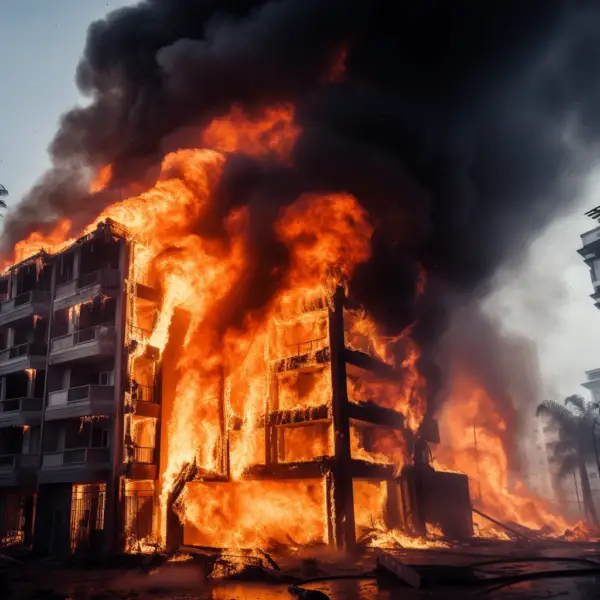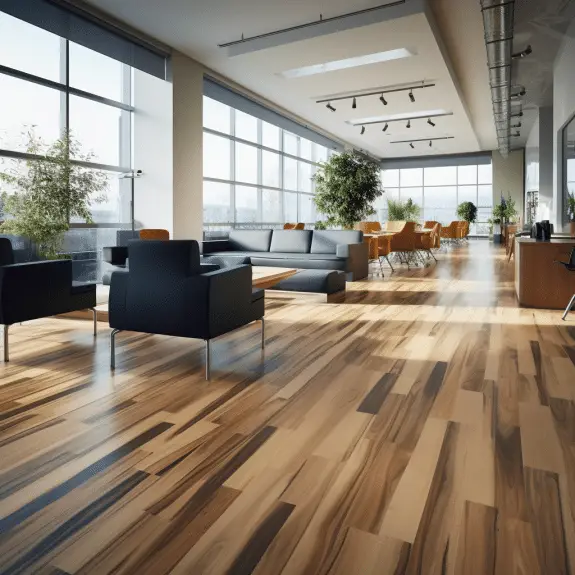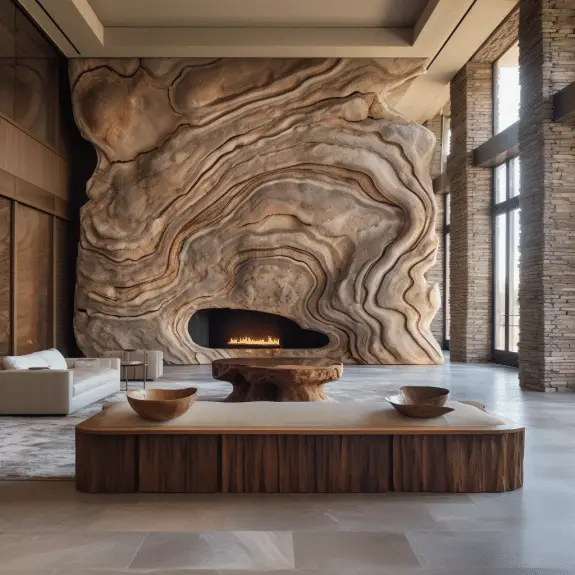Optimizing Safety: Evaluating Fire-Resistant Building Materials
A successful passive fire protection strategy involves reviewing construction materials for their ability to inhibit the passage of flames. This ensures the right levels of protection for a building in the event of a fire, in line with stringent building and construction regulations. In this comprehensive guide, we will be reviewing the specific fire-resisting properties of common building materials such as brick, stone, timber, steel, concrete, glass, and cast iron.
Key Takeaways:
- Fire-resistant building materials are crucial for protecting buildings against fire.
- No material can be 100% fireproof, but selecting fire-resistant materials can significantly increase safety.
- Passive fire protection measures, including the use of fire-resistant materials, are essential for ensuring the structural integrity and safety of buildings.
- Brick, stone, timber, steel, concrete, glass, and cast iron have varying degrees of fire resistance.
- Fireproofing aims to reduce the susceptibility of materials to fire, while fire-resistant materials are designed to resist the passage of fire for a certain amount of time.
Brick and Mortar
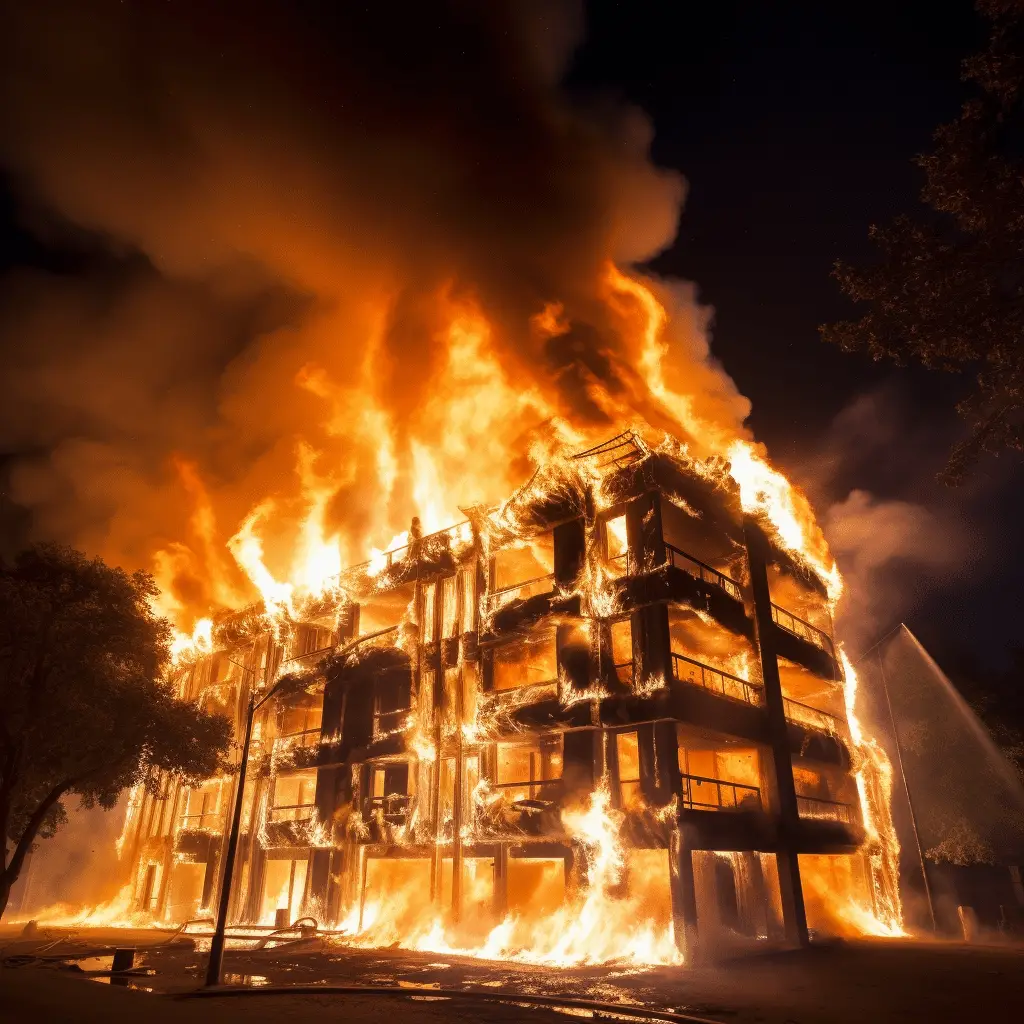
Bricks are attractive building materials due to their fire resistance. Their 1200°C resistance makes them a reliable fire barrier. Bricks are heat-resistant because they are manufactured in fire kilns.
Bricks are fire-resistant, but mortar may not be. Most mortars are fire-resistant, but extreme temperatures can break and expand them. Brick is still one of the most popular fire-resistant materials for external walls despite this limitation.
Bricks are Class A fire-resistant, meaning they provide the most protection. Bricks have low thermal conductivity, therefore they conduct heat poorly. This increases their fire resistance.
Bricks provide a reliable barrier against the spread of fire, with a fire-resistance rating of Class A. However, it’s important to consider the limitations of mortar, which may crack and expand under extreme heat.
Table 1: Fire-Resistance Ratings of Brick and Mortar
| Material | Fire-Resistance Rating |
|---|---|
| Brick | Class A |
| Mortar | Varies, but generally less fire-resistant than bricks |
Stone
Different stones have different fire resistance. Granite explodes in extreme heat, making it unsuitable for construction. Some, like limestone, disintegrate under high temperatures, damaging their structure. Unlike other stones, sandstone can endure mild fires without cracking or breaking.
Sandstone’s composition and qualities make it fire-resistant. Its high quartz concentration makes it thermally resistant, preserving its structure and look. Sandstone also has limited thermal conductivity, making it fire-resistant.
Sandstone is employed in fire-risk construction projects due to its fire resistance. Building cladding systems use it to guard against flames. Sandstone is also used to build fireplaces and chimneys, where its fire resistance prevents fires from spreading.
Table: Fire Resistance of Stone Materials
| Stone Material | Fire Resistance |
|---|---|
| Granite | Prone to exploding when exposed to heat |
| Limestone | Tends to crumble under extreme heat |
| Sandstone | Can withstand moderate fire conditions without cracking or breaking apart |
Timber
Timber, or wood, is a widely used building material known for its natural beauty and versatility. While timber is a common conductor of heat, it can actually exhibit reasonable fire resistance when used in heavy construction.
When timber is exposed to fire, it undergoes a process called charring. As the outer layers of the wood burn away, a charred layer is formed. This layer acts as a barrier, subduing the fire and protecting the inner core of the timber. The thickness of the charred layer determines the fire resistance of the timber.
To enhance the fire resistance of timber, it can be treated with fire-retardant chemicals or coated with intumescent paint. Fire retardants are substances that slow down or inhibit the spread of fire. Intumescent paint, on the other hand, expands when exposed to extreme heat, creating a foam-like barrier that insulates the timber and delays the effects of fire.
In addition to these measures, it’s important to ensure proper construction techniques and adherence to fire safety standards when using timber as a building material. This includes implementing appropriate fire-rated assemblies and ensuring proper compartmentalization to minimize the spread of fire within a structure.
Fire-Resistant Timber in Construction
When it comes to using timber in construction, it’s crucial to select the right type of wood and apply the necessary fire-resistant treatments. Some types of timber, such as hardwoods like oak and redwood, naturally possess higher fire resistance than softwoods like pine.
Fire-resistant timber is commonly used in applications where structural integrity is essential. This includes heavy timber construction, such as timber frames, beams, and columns. By incorporating fire-resistant timber in these critical elements, the overall fire protection of a building can be significantly improved.
| Type of Timber | Fire Resistance |
|---|---|
| Hardwoods (Oak, Redwood) | Higher fire resistance |
| Softwoods (Pine, Spruce) | Lower fire resistance |
Steel
Steel is a widely used material in construction due to its exceptional strength and durability. However, when it comes to fire resistance, steel has certain limitations. Exposed to prolonged high temperatures, steel beams can lose their load-bearing capacity, leading to the collapse of the structure. To enhance the fire resistance of structural steel, various measures can be taken.
One effective method is the application of intumescent paint. When exposed to extreme heat, this specialized paint expands and forms a protective charred layer on the steel surface. This layer acts as an insulating barrier, slowing down the transfer of heat to the steel and prolonging its structural integrity. Intumescent paint is a cost-effective fire protection solution that can buy valuable time for evacuation and firefighting efforts.
“Intumescent paint is a game-changer in terms of fire protection for steel structures. Its ability to expand and create a protective layer greatly enhances the fire resistance of the steel, preserving its load-bearing capacity for a longer duration.” – Fire Safety Expert
Intumescent Paint Application Process
The application of intumescent paint involves several steps to ensure proper adhesion and effectiveness. The process typically includes surface preparation, primer application, base coat application, and topcoat application. Each layer is carefully applied according to the manufacturer’s instructions, and proper drying time is allowed between coats. The final result is a fire-resistant coating that provides an additional layer of protection to the steel structure.
| Step | Description |
|---|---|
| Surface Preparation | The steel surface is cleaned and prepared to remove any contaminants that could interfere with paint adhesion. |
| Primer Application | A primer is applied to the steel surface to promote adhesion and ensure a uniform finish. |
| Base Coat Application | The intumescent paint’s base coat is applied to achieve the desired fire resistance rating, typically measured in minutes. |
| Topcoat Application | A topcoat is applied to provide additional protection and enhance the aesthetic appearance of the steel structure. |
In addition to intumescent paint, other fire protection methods for steel structures include the use of fire-resistant coatings, fireproofing sprays, and fire-rated insulation. Each method has its advantages and suitability for different applications. Consulting with fire safety professionals can help determine the most effective fire protection solution for specific steel structures.
Section 6: Fire-Resistant Concrete
Concrete is a widely used building material known for its durability and strength. When it comes to fire resistance, the composition of the concrete plays a crucial role. Reinforced concrete, which is concrete embedded with steel bars or mesh, has low thermal conductivity, allowing it to withstand high temperatures for an extended period before losing its structural integrity.
Reinforced concrete can withstand temperatures up to 1000°C for approximately sixty minutes. This is due to the steel reinforcement acting as a barrier against heat transfer. The aggregates used in the concrete, such as stone or gravel, also contribute to its fire resistance. The size, shape, and quality of the aggregates impact the overall fire resistance of the concrete.
While reinforced concrete offers significant fire resistance, it is essential to note that prolonged exposure to high temperatures can eventually lead to the loss of strength and structural integrity. Therefore, it is crucial to follow building regulations and design structures that consider the potential effects of fire on reinforced concrete elements.
| Material | Fire Resistance | Max Temperature | Duration |
|---|---|---|---|
| Reinforced Concrete | High | Up to 1000°C | Approximately 60 minutes |
| Brick and Mortar | High | Up to 1200°C | Varies |
| Steel | Medium | Dependent on thickness | Varies |
Reinforced concrete offers significant fire resistance, allowing structures to withstand temperatures up to 1000°C for approximately sixty minutes. However, prolonged exposure to high temperatures can eventually lead to the loss of strength and structural integrity.
Aggregates and Fire Resistance
The choice of aggregates used in concrete also affects its fire resistance. Aggregates help in improving the overall strength and fire-retardant properties of concrete. The size, shape, and quality of aggregates impact the density and thermal conductivity of the material. Fine aggregates, such as sand, tend to have better fire resistance compared to coarse aggregates.
Aggregates with high thermal conductivity, such as certain types of lightweight aggregates, can reduce the fire resistance of concrete. It is important to carefully select aggregates that enhance the fire resistance of the concrete mixture. Factors to consider include their composition, thermal properties, and the specific application of the concrete.
By understanding and considering the fire-resisting properties of concrete and its aggregates, builders can make informed decisions to ensure the safety and longevity of structures in the event of a fire.
Section 7: Fire-Resistant Glass in Construction
Fire-resistant glass is a key component in building structures that prioritize fire safety. Its ability to withstand high temperatures and prevent the passage of flames makes it an essential material in areas where fire resistance is crucial. In this section, we will explore the different types of fire-resistant glass and their application in construction.
Types of Fire-Resistant Glass
One common type of fire-resistant glass used in construction is reinforced glass. Reinforced glass is designed by sandwiching a layer of fire-resistant material, such as a transparent interlayer made of intumescent material, between two layers of glass. This arrangement enhances the glass’s ability to maintain its structural integrity and prevent fire from spreading.
Another type of fire-resistant glass is Georgian wired glass. This traditional glass features a grid or mesh of thin metal wire embedded within the glass. The metal wire reinforces the glass, preventing it from shattering under high temperatures and pressure caused by a fire. Georgian wired glass is often found in areas where impact resistance is also a concern, such as in schools, hospitals, and other public buildings.
Applications of Fire-Resistant Glass
Fire-resistant glass finds widespread use in various areas of a building, including windows, doors, partitions, and facades. By incorporating fire-resistant glass into these elements, architects and builders can create fire-safe compartments within a building, minimizing the spread of fire and providing occupants with vital escape routes.
| Application | Fire-Resistant Glass Type |
|---|---|
| Windows and Doors | Reinforced Glass |
| Partitions | Reinforced Glass, Georgian Wired Glass |
| Facades | Reinforced Glass |
Table: Applications of Fire-Resistant Glass and the Corresponding Glass Types.
Fire-resistant glass plays a vital role in protecting buildings and occupants from the devastating effects of fire. Whether in the form of reinforced glass or Georgian wired glass, these specialized glass types provide crucial fire resistance and structural integrity, allowing for safe evacuation routes and compartmentalization. By incorporating fire-resistant glass into building design, architects and builders can greatly enhance fire safety and create structures that prioritize the well-being of occupants.
Section 8: Cast Iron
Cast iron is a unique building material with its own set of characteristics when it comes to fire resistance. While it is not commonly used in construction, it can still offer some level of protection against fire when properly handled. Cast iron has excellent heat retention properties, making it slow to heat up and slow to cool down. However, it can become brittle when exposed to high temperatures and may shatter if cooled suddenly.
To enhance the fire resistance of cast iron, it is often covered with brickwork or another more stable fire-resistant material, such as concrete. This additional layer acts as a barrier, providing extra protection and preventing the cast iron from shattering under extreme heat. By combining cast iron with these fire-resistant materials, builders can create a safer environment and increase the structural integrity of the building.
“Covering cast iron with brickwork or concrete is a practical solution to reinforce its fire resistance,” explains expert architect James Thompson.
“By incorporating a stable fire-resistant material, we can mitigate the risk of cast iron shattering and improve the overall fire performance of the structure.”
In conclusion, while cast iron may not have the same level of fire resistance as other materials, it can still be utilized in construction by incorporating additional fire-resistant measures. By implementing brickwork or concrete coverings, cast iron can become a more reliable and stable fire-resistant material, contributing to the overall fire safety of the building.
Table: Fire-Resistance Comparison of Common Building Materials
| Material | Fire Resistance Rating | Properties |
|---|---|---|
| Brick and Mortar | High | Can withstand temperatures up to 1200°C |
| Stone | Varying | Granite prone to explosion, sandstone can withstand moderate fire conditions |
| Timber | Moderate | Chars when exposed to fire, can be treated with fire retardant chemicals |
| Steel | Moderate | Exposed steel can sag and buckle, intumescent paint enhances fire resistance |
| Concrete | High | Reinforced concrete withstands temperatures up to 1000°C for approximately 60 minutes |
| Glass | Low | Reinforced glass used for increased fire resistance |
| Cast Iron | Low | Exposed to high temperatures can shatter, enhances fire resistance with brickwork or concrete |
Fireproofing vs Fire-Resistant Materials
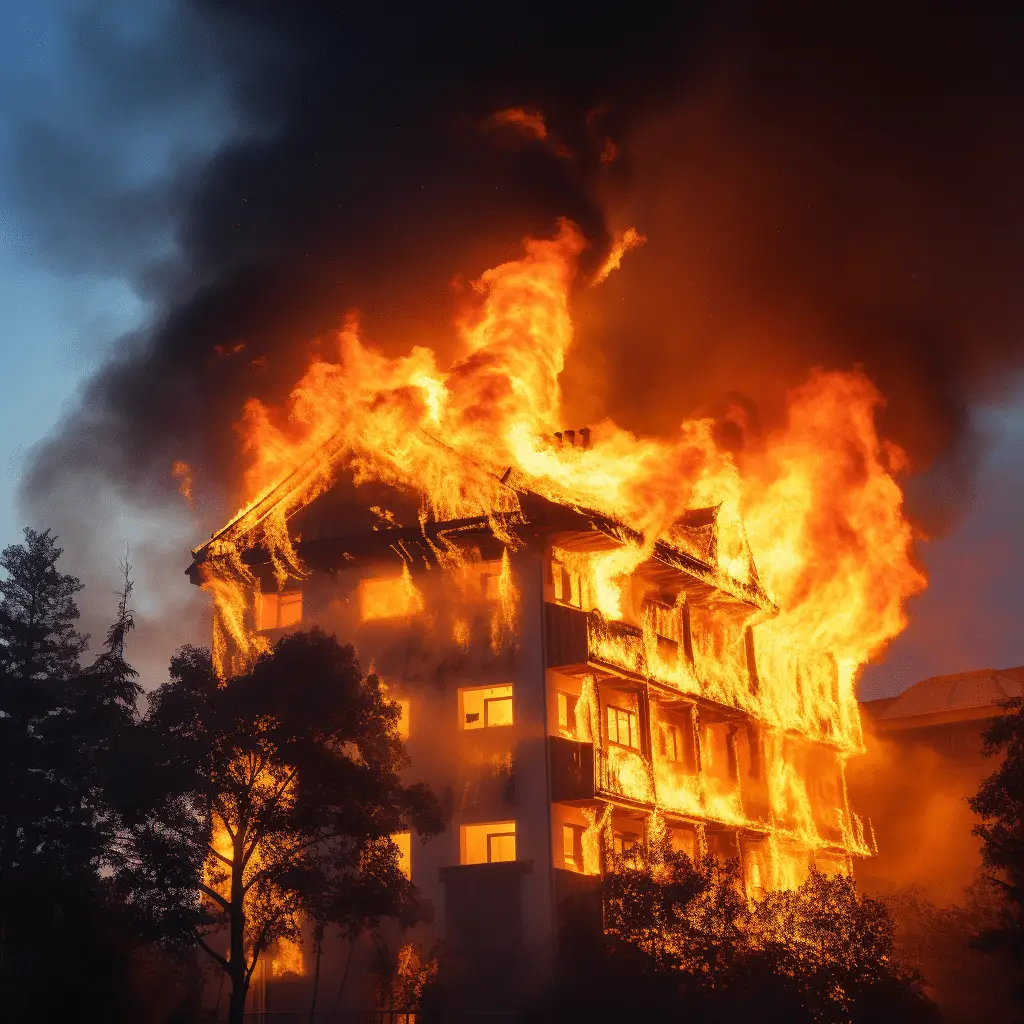
Fire-resistant building materials, Knowing the distinction between fireproofing and fire-resistant materials is crucial for building fire protection. Both systems improve fire safety, although they have distinct goals and protection levels.
Materials are much less fire-prone after fireproofing. No material is 100% fireproof. Fireproofing makes material less flammable and ignition-resistant. This can involve fire-retardant chemicals or intumescent coatings that expand when heated to prevent flames. Fireproofing significantly reduces fire spread and intensity, but it does not ensure fire resistance.
However, fire-resistant materials are engineered to withstand fire for a set time. Fire resistance ratings are based on these materials’ capacity to resist and contain fire. Fire-resistant materials include bricks, concrete, steel, and treated wood. They are chosen for their structural integrity and flame resistance. Fire-resistant materials may eventually burn, but they allow for evacuation and may save a building.
Also consider fire-retardant materials. These materials are designed to burn slowly. Many materials can be treated with fire-retardants to lessen their flammability and slow fire propagation. Fire-retardant upholstery and drapes are used in interior design to reduce fire risk. However, fire-retardant materials may not resist fire as well as fire-resistant materials.
Conclusion
Choosing fire-resistant building materials is of utmost importance when it comes to protecting structures from the devastating effects of fire. While no material can be considered completely fireproof, selecting materials that have the ability to resist and delay the passage of flames can greatly enhance fire safety.
Passive fire protection measures, such as the use of fire-resistant materials, play a crucial role in ensuring the structural integrity and safety of buildings. By following strict building regulations and considering the fire-resisting properties of common materials like brick, stone, timber, steel, concrete, glass, and cast iron, builders and homeowners can create safer living and working environments.
FAQ
What is a fire-resistant material?
A fire-resistant material is a material that is designed to resist the passage of fire for a certain amount of time. It has properties that inhibit the spread of flames and heat, providing protection to a building in the event of a fire.
Are fire-resistant materials completely fireproof?
No, no material can be completely fireproof. Fire-resistant materials are designed to significantly reduce the susceptibility of materials to fire and delay the passage of flames, but they cannot prevent fire entirely.
What are the most commonly used fire-resistant building materials?
The most commonly used fire-resistant building materials include brick, stone, timber, steel, concrete, glass, and cast iron. Each material has different levels of fire resistance and is suitable for different applications.
How does fire-resistant timber work?
Fire-resistant timber, when exposed to fire, forms a charred layer that acts as a barrier, subduing the fire. Timber can also be treated with fire retardant chemicals or intumescent paint to enhance its fire resistance.
Why is intumescent paint used on steel?
Intumescent paint is used on steel to improve its fire resistance. When exposed to extreme heat, the paint forms a charred layer, which provides an additional layer of protection to the steel beams, delaying the effects of fire.
How long can reinforced concrete withstand high temperatures?
Reinforced concrete, which has low thermal conductivity, can withstand temperatures up to 1000°C for approximately sixty minutes before it begins to lose its strength. The composition of the concrete and the type of cement and aggregates used play a crucial role in its fire resistance.
What is the purpose of Georgian wired glass?
Georgian wired glass is a type of reinforced glass commonly used in construction. It features a grid or mesh of thin metal wire, which prevents the glass from shattering even under pressure and heat from fire.
Why is cast iron not commonly used as a building material?
Cast iron is not commonly used as a building material due to its behavior under high temperatures. When exposed to heat and then cooled suddenly, cast iron can shatter into pieces. It is often covered with brickwork or another more stable fire-resistant material, such as concrete, to enhance its fire resistance.
What is the difference between fireproofing and fire-resistant materials?
Fireproofing aims to massively reduce the susceptibility of materials to fire, but no material can be 100% fireproof. Fire-resistant materials, on the other hand, are designed to resist the passage of fire for a certain amount of time. Fire-retardant materials are intended to burn more slowly than their flammable counterparts but are not inherently fire-resistant.



